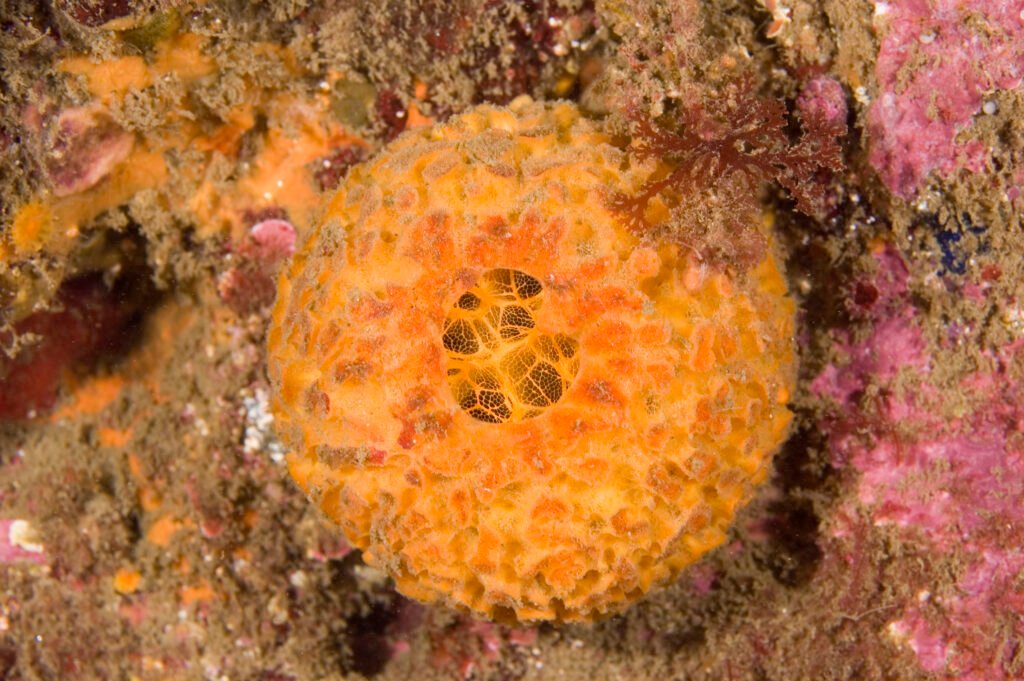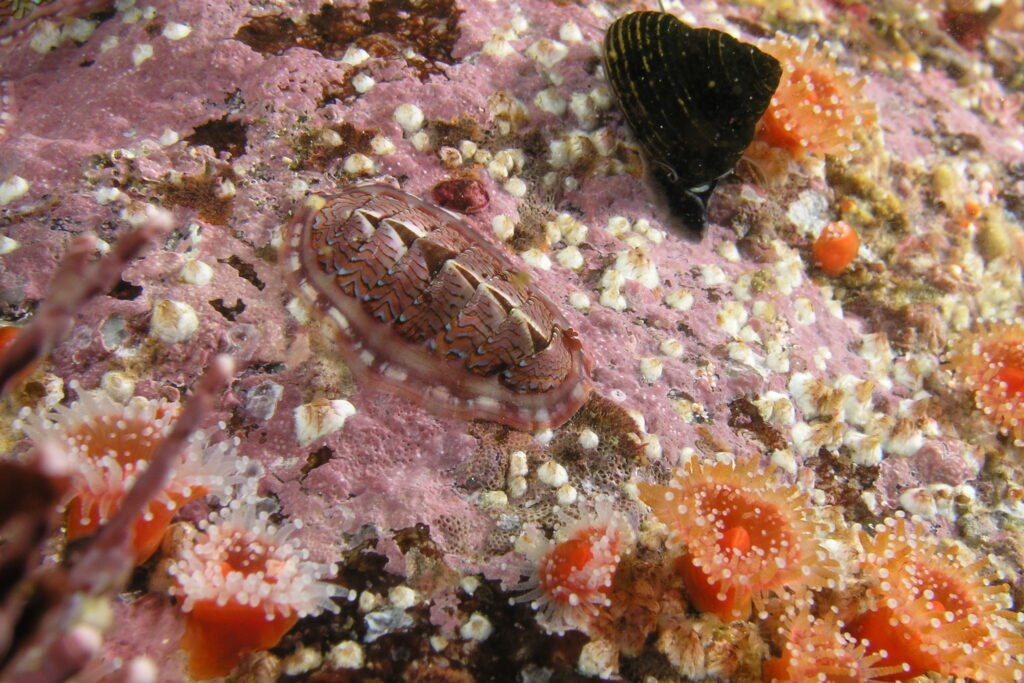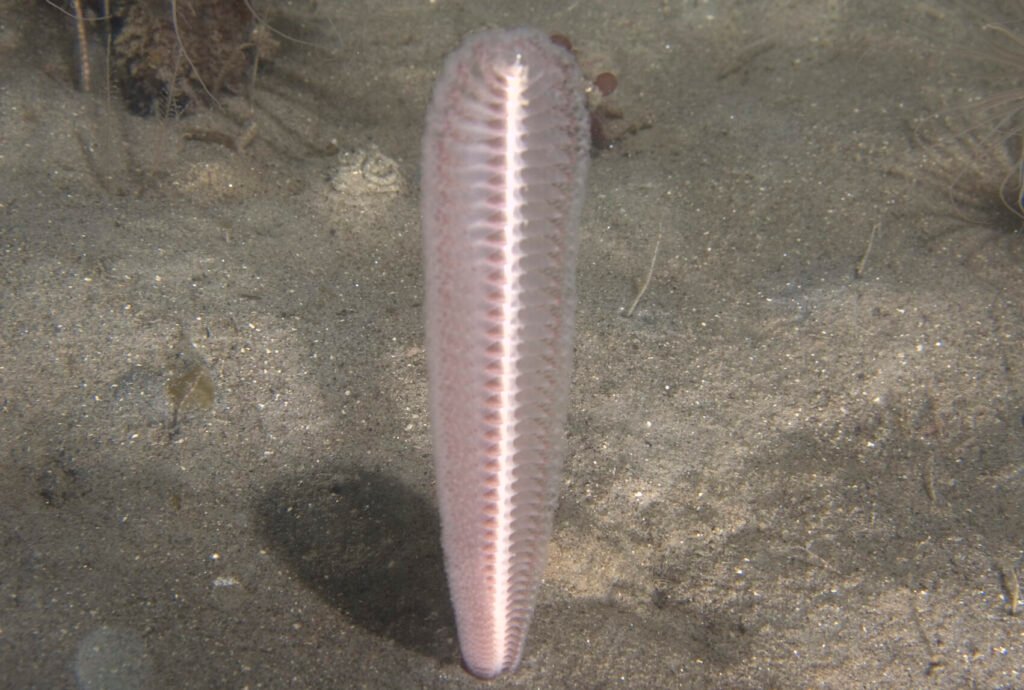Physical Description
The Rock Scallop, scientifically known as Crassadoma gigantea, presents a distinct appearance with its shell ranging from 4 to 15 centimeters in size. As it ages, the shell tends to become irregular in shape. Notably, the right-hand shell is firmly attached to rocks, while the upper (left) shell features radial ribs adorned with scaly shingle-like spines. Its mantle margin exhibits a striking orange hue adorned with numerous blue eyes, adding to its unique aesthetic. Additionally, the hinge area on the interior of the shell is characterized by a vivid purple coloration.
Habitat
This species of scallop is commonly found along the eastern Pacific coast, inhabiting various coastal environments from British Columbia to Baja. However, despite its prevalence, Rock Scallops often remain cryptic due to overgrowth and fouling of their shells. They can be found nestled in crevices and on wharf pilings, where they blend seamlessly with their surroundings.
Geographical Range
The Rock Scallop’s range spans from the coastal waters of British Columbia in the north to the Baja Peninsula in the south. Its ability to thrive in diverse marine habitats along this vast stretch of coastline highlights its adaptability and resilience.
What They Eat
As filter feeders, Rock Scallops primarily subsist on microscopic plankton and other suspended particles present in the water column. They draw in water through their siphons, extracting nutrients and oxygen while expelling waste materials.












